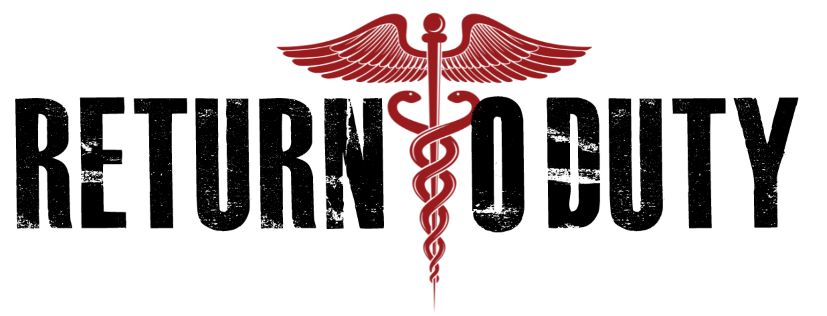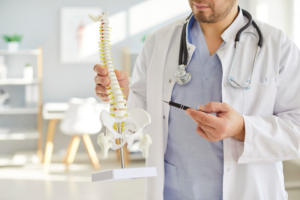Having back problems is the most common medical issue people face. 8 out of 10 people suffer from a back problem, one of them being lumbar spinal stenosis. From 250,000-500,000 people suffer from lumbar spinal stenosis, and numbers keep increasing.
Thankfully, that are different ways that lumbar spinal stenosis can be treated. Continue reading to find out more about this condition and what kind of treatment for lumbar spinal stenosis is right for you.
What is Spinal Stenosis?
Your spine is made up of shock-absorbing discs and several bones we know as vertebrae. They also protect your spinal cord, which is a crucial part of your nervous system, as it connects both your body and brain. Your spinal cord, along with your spinal nerve roots, is located in the spinal canal.
With spinal stenosis, the space within your spine and vertebrae begin to narrow. The more it tightens, the more it compresses your spinal canal, affecting your nerves. The narrowing can occur in various parts of the spine, and most commonly in the lumbar area.
What is Lumbar Spinal Stenosis?
Lumbar spinal stenosis is when the compression of your spinal canal occurs in the lower part of your back, known as the lumbar section. The nerve roots are located in this area, right at the bottom of your spine. If the narrowing of your spinal canal occurs in the lumbar, it can compress the nerve roots and cause them to become increasingly irritated, leading to pain.
What Causes Lumbar Spinal Stenosis?
Several factors can lead to developing spinal stenosis. The most common one is aging, due to the deterioration of your bones along with your spine. Spinal stenosis is mostly seen in men and women ages 50 and older.
Some people are born with a naturally narrow spinal canal and can develop lumbar spinal stenosis at an early age. Yet, spinal stenosis is a long, gradual process and cannot be identified overnight. Lumbar spinal stenosis can happen over several years or even decades.
However, many other reasons can cause lumbar spinal stenosis.
Bone Spurs
Bony projections that grow along bone edges are known as bone spurs. Bone spurs, or medically known as osteophytes, appear where bones contact each other, such as in your joints. Spinal stenosis can result if bone spurs grow on your spine.
Any joint damage related to osteoarthritis can be the main reason as to why bone spurs form. Bone spurs aren’t easy to detect and can be overseen, mainly because bone spurs don’t cause any kinds of signs or symptoms.
Bulging/Herniated Disks
Along the spine, between each vertebra, you’ll find the shock absorbers or vertebral disks. Inside each vertebral disk, you have a gel-like nucleus. If you experience a sudden injury, the jelly-like center can bulge, resulting in a herniated disk.
The herniated disk then compresses on the outer ring located near the disk. If this compression persists, the gel-like material can break through the disk all the way and make the ring bulge out. In turn, this will add more pressure on the nerve roots and spinal cord.
Thickened Ligaments
There are fiber bands around our spine, known as ligaments, designed to hold our spine together. These bands connect two vertebrae to each other, which helps you to maintain stability. With time, due to inflammation or other factors, these ligaments can thicken to the point where it bulges within the spinal canal area.
Fractures/Injuries
Unexpected injuries that break or dislocate bones near the spine can cause the spinal canal to narrow. Incidents such as violent encounters, traffic accidents, or bad falls can lead to sudden damage around your spine.
Cysts/Tumors
Due to natural degeneration, a cyst can grow on our joints or tendons. Cysts are usually benign, and they aren’t noticeable unless they begin to compress important nerves in your spine. They aren’t considered dangerous, but it all depends on where the cyst is located and how big it is.
On the other hand, a spinal tumor is an abnormal mass of tissue that forms on or around your spine, and the cells can actually make the tumor grow or even multiply, depending on the type of tumor. Tumors can also cause compression to the spinal canal, depending on where they grow.
Symptoms of Lumbar Spinal Stenosis
Depending on the type, the symptoms or signs of lumbar spinal stenosis may affect certain areas differently. It can affect one leg or both of your legs.
Sciatica, also known as radiculopathy, is the usual sign of when your nerve roots are being compressed. Your lower back, thighs, legs, or even your feet will also be affected.
One way to tell if your leg or back pain is due to lumbar spinal stenosis is when you bend forward. This movement causes the narrow canal to widen up, which relieves any compression temporarily. Patients typically feel pain in their back or legs during standing or walking and get relief when they sit.
Radicular pain, which begins at the base of the lumbar spine and progresses along the affected nerve path. Radicular pain is described as one of the following:
- Sharp pain or a burning sensation that strikes up your legs, thighs, and lower back
- Pain in your rear pelvis, lower back, or thighs
- Leg and foot cramps
A loss of sensation is also a common sign of lumbar spinal stenosis, as well as a pins-and-needles feeling, tingling, or numbness in your legs or feet. Having weak legs and struggling to move them correctly is also another sign you should look out for.
When the L5 nerve root suffers compression, this can make it highly difficult for you to lift your foot. This term is also known as the foot drop symptom.
How Do You Diagnose Spinal Stenosis?
Once you express the symptoms you’ve been experiencing, your doctor will perform a physical exam and then order for you to get some tests done.
To perform your physical exam, your doctor will most likely feel your spine and press on different kinds of areas to see if you feel pain. Your doctor might ask you to bend or sit in various positions in order to observe any possible symptoms. Because a loss of balance is a big sign of lumbar spinal stenosis, your doctor might ask you to stand or walk to see if you’re able to do so without any trouble, and they will also want to check to see any possible weakening in your limbs.
Your doctor will also want clear images of your spine to determine if you’re suffering from spinal compression. To obtain these images, you’ll either have to get a CT scan, an X-Ray, or even an MRI. Depending on your case or if results are inconclusive, your doctor might want you to get one or all three.
Physical Therapy
Physical therapy is usually the first treatment to be recommended. In physical therapy, you’ll have a professional guiding you through exercises designed to target the lumbar area and spine.
Along with providing relief, physical therapy will help you improve your balance, endurance, and flexibility. With regular physical therapy, you may reap the same benefits as you would with surgery.
General Exercises
Having a nutritious and balanced diet and getting regular exercise is vital for a healthy spine. Any excess weight might contribute to more spinal compression and pain, and slimming down would also be a big way to relieve pressure off your spine. Before creating an exercise routine, speak with your doctor first, and ask which kinds of exercises are safe for you to perform.
Specific stretching exercises can help you improve your flexibility, which will allow you to move your back and neck with a lot more ease and in a healthier way. It’s also crucial for you to strengthen the back and neck muscles, which will help you obtain better balance. Stabilization training is a great way to target and strengthen these muscles.
Another great pain-reliever is doing cardio or aerobic exercises. By performing these exercises, your brain releases “happy hormones,” also known as endorphins. Not only do they uplift you and put you in a better mood, but they help relieve pain.
Other Treatments
Along with the exercise provided or approved by your doctor, they might also suggest complementing it with other forms of treatment. Your doctor will provide several potential treatments for you to try.
Medication
Lumbar spinal stenosis is nearly always treated with medication. Commonly, nonsteroidal anti-inflammatory drugs are prescribed in order to reduce inflammation. For example, drugs such as aspirin, ibuprofen, or naproxen might be useful in reducing pain.
Your spine doctor might also prescribe analgesics, anti-depressants, or even anti-seizure drugs to help with chronic pain and damaged nerves.
Injections
Injections can have the same effect as specific drugs. Injecting corticosteroids right into the region around the spinal cord will reduce inflammation and pain almost immediately.
Your doctor might also recommend nerve blocks. Nerve blocks are anesthetics that they inject near the area where there are damaged nerves. However, everyone reacts differently to nerve blocks, and pain relief might be long-term, short-term, or non-existent.
Chiropractic Care
Chiropractors are trained professionals that specialize in adjusting your spine in order to alleviate pain and enhance movement. Chiropractic care helps open up room for the spinal cord within the spinal canal and can reduce any compression your nerve roots may be suffering.
Plus, chiropractic therapy is not invasive and doesn’t require you to take strong or harmful medication.
Surgical Options
If you’re still undergoing severe discomfort and none of the other treatments have worked so far, your spine doctor might advise spinal surgery. Some surgical options are less or more intrusive than others. All these surgical options’ main goal is to reduce as much compression on the spinal canal as possible but shouldn’t be considered a cure.
Here are a few of the surgical options available.
Spinal Fusion
A spinal fusion surgery aims to sustain or secure two or more bones so they are unable to move. They use pelvic bone or metal hardware in order to complete the procedure. Bending may be more of a struggle if you undergo this spinal surgery, but it’s rather unobtrusive, and pain reduction is noticeable.
Laminectomy
To perform a laminectomy, your surgeon will remove the back part of the vertebra, known as the laminae. This is done in order to make more room for the spinal cord and nerve roots that are being compressed.
Discectomy
If your spinal stenosis comes from a herniated disc or bulging, then a discectomy might become an option. With a discectomy, your surgeon removes the herniated disc or bulging. They can either make one cut in your spine or several cuts to perform this surgery, depending on your case’s severity.
By taking out the herniated disc or bulge, pressure on your nerves and spinal cord will subside.
Laminotomy
A laminotomy implicates making a small hole in the posterior part of the affected vertebra. Your spine doctor will determine how big or small the hole should be in order to reduce enough pressure.
Get Treatment for Lumbar Spinal Stenosis
As you can see, there are various methods available to serve as lumbar spinal stenosis treatment. Your doctor will offer several options before anything as intrusive as surgery.
Now that you fully understand the condition and the treatment for lumbar spinal stenosis, it’s time to see a spine doctor. Even if you’re unsure about your symptoms, the safest thing to do is contact a professional. Book a consultation with us today, and our staff will gladly evaluate your case and help find the right treatment for you.




